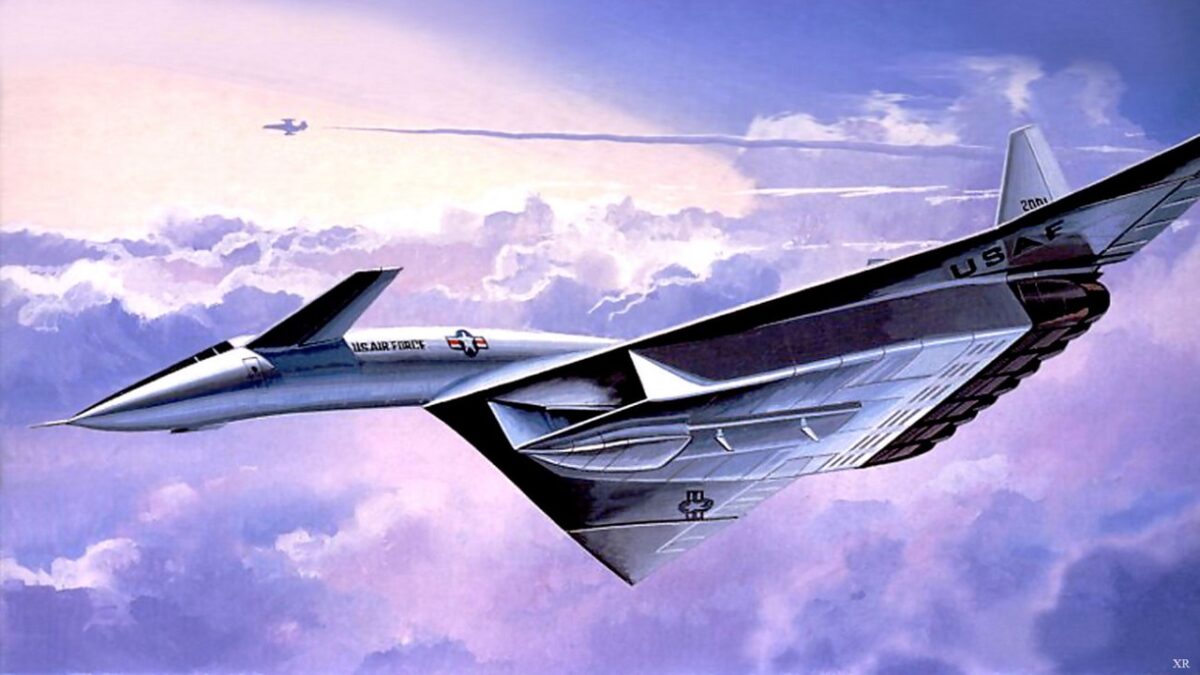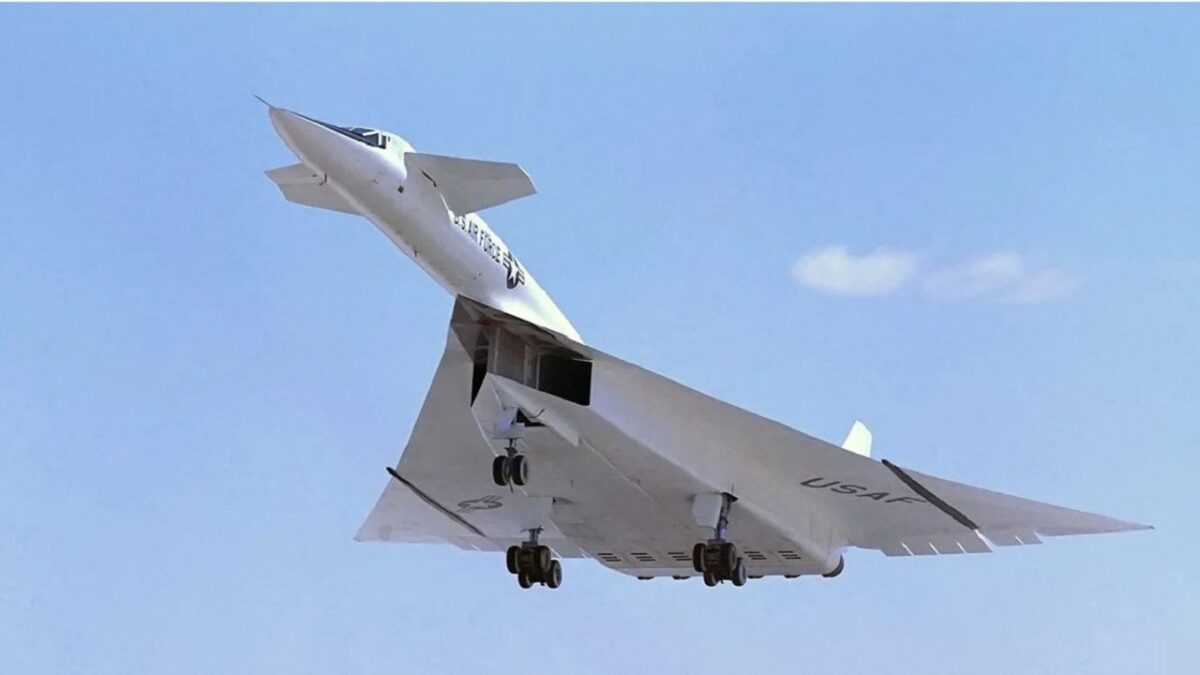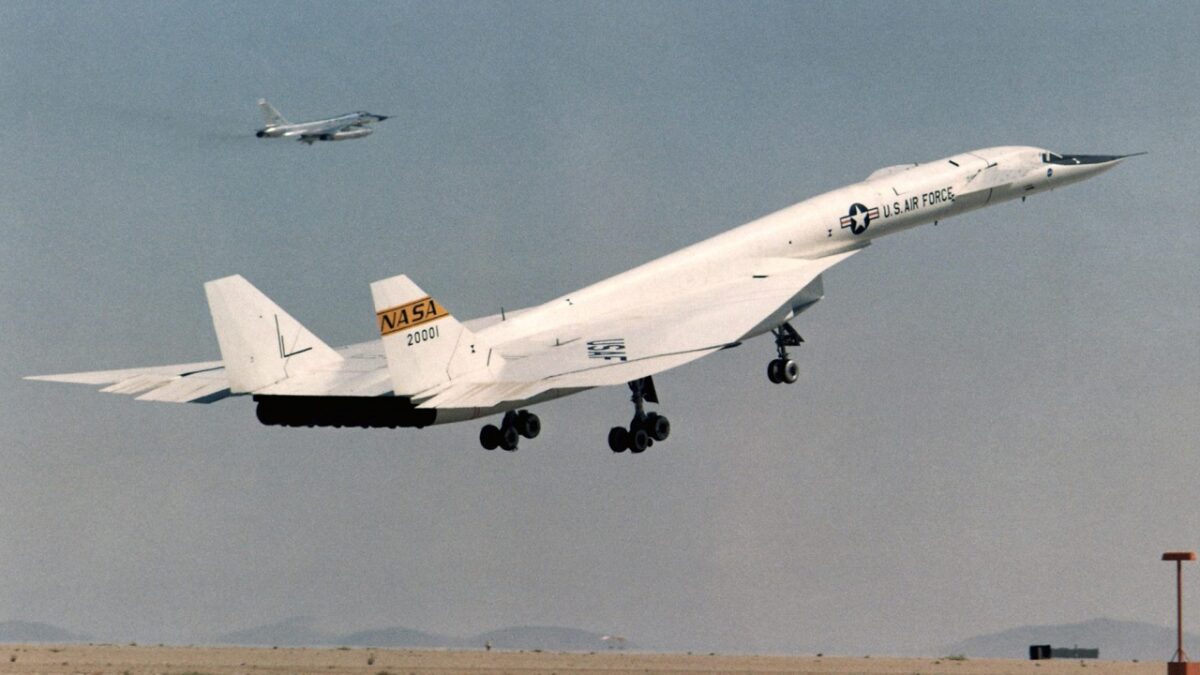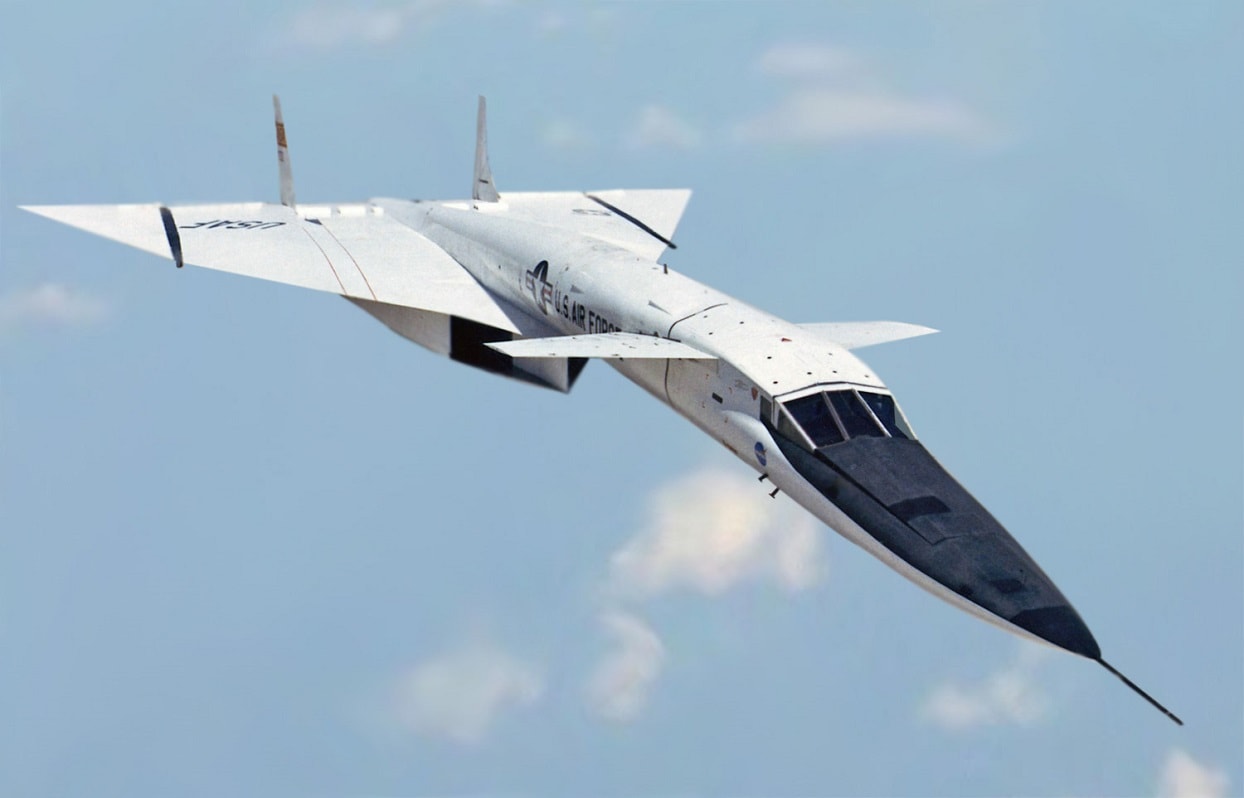The XB-70 was a bomber that, on paper, looked way ahead of its time with impressive speeds and stats that would have made Russia or the old Soviet Union very nervous if she ever flew.
But the Air Force had to make the tough call to kill the project. We asked one of our very own top-tier military experts to explain to us why:
It’s not every day that a military aircraft that never even makes it past the experimental/prototype stage so utterly scares the hell out of an adversary’s political and military leadership that the latter country’s R&D team not only designs and fields a fighter-interceptor to deal with said X-plane, but spawns the world’s fastest fighter-interceptor to boot! Well, in the heady days of the Cold War, the U.S. Air Force’s XB-70 Valkyrie supersonic bomber did just that, and the spawn of this particular manifestation of the Law of Unintended Consequences was the MiG-25 Foxbat. Since we’ve already published an article on the Foxbat, it would only be fair and logical to do so on the Valkyrie that scared the Soviet jet into existence.
X-Plaining the X(B-70) Plane
The XB-70 Valkyrie made her maiden flight on 21 September 1964. Only two airframes were built before the experimental project was retired on 4 February 1969. The two would-be warbirds were manufactured by North American Aviation (NAA), best known for the iconic P-51D Mustang and B-25 Mitchell as well as the not-quite iconic but nonetheless historically significant F-82 Twin Mustang. As for the moniker, Ed Mack Miller tells that tale in an Air Force Times article published back on New Year’s Day of 1960: “The name ‘Valkyrie’ was selected for the B-70 in a Strategic Air Command naming contest. More than 20,000 names were submitted. In Norse mythology, the Valkyrie were maidens of extreme beauty, who ranged the heavens on their steeds, choosing those who were to die in battle and bearing the fallen heroes back to Valhalla.”
The Valkyrie was not America’s first operation supersonic bomber; that historical distinction goes to the Convair B-58 Hustler, which had made her own maiden flight on 11 November 1956 and, though she never saw combat, had attained a brief moment of Hollywood stardom by portraying the fictitious “Vindicator” bomber in the 1964 nuclear war suspense thriller Fail Safe starring Henry Fonda and Walther Matthau.
As for the XB-70, as noted by the Federation of American Scientists (FAS) info page on the star-crossed bomber: “With research and development studies beginning in 1955, the XB-70 was a large, long-range strategic bomber planned to be the replacement for the B-52. As in the B-58 program, the Air Force wanted new technology advances. To this end, the Air Force gave the prime contractor total weapon system responsibility. Competition between Boeing and North American for the contract occurred during the design phase. In 1958, the North American design was chosen and a development contract awarded. The Air Force requirement was for a Mach 3, high-altitude, long-range bomber capable of carrying nuclear and conventional weapons.”
The short-lived end result had a max airspeed of 2,056 mph (Mach 3.1/ 3,310 kph/ 1,787 knots) and a cruise speed of 2,000 mph (Mach 3.0/ 3,219 kph/ 1,738 knots), powered by six General Electric YJ-93 engines mounted in delta wings, packing 30,000 pounds thrust each with afterburner, which could carry the plane to a maximum range of 4,288 miles (6,900 kilometers). Fuselage length of 196 feet (59.74 meters), height at the tail was 31 feet (9.44 meters), wingspan was 105 feet (32 meters), and the estimated maximum gross weight of 521,000 pounds (236,621 kilograms).
The Valkyrie had a crew of four: pilot, copilot, bombardier, and defensive systems operator.
XB-70: This Ride of the Valkyries Got Cut Short
Alas, for all promise the XB-70 held on-paper, it wasn’t meant to be, as the plane was overcome by events (OBE). First and foremost, there was continuing emergence of then-new SAMs, which also affected the B-58 as well as the B-47 Stratojet. Then there was the dollars & sense factor: in 1961, the newly-inaugurated President Kennedy announced that the XB-70 program was to be reduced to research only, citing high cost (over $700 million per prototype) and vulnerability; the JFK administration felt ICBMs were more cost effective because they were less vulnerable and were cheaper operationally.
Last but not least, and most tragically, as noted on the Boeing Historical Snapshot page: “On June 8, 1966, an accident during a photo flight took the lives of two pilots and destroyed two airplanes—the XB-70A-2 and an F-104 that had been captured by the Valkyrie’s vortex wake.”
XB-70 Fear Fosters the Foxbat
Ergo, as previously noted, the remaining XB-70 was retired in 1969. However, apparently the Soviet Union’s V-PVO (войска ПВО/ voyska protivovozdushnoy oborony, literally translated as “Anti-Air Defense Troops”) apparently didn’t get the memos in time, as they went ahead and sent the MiG-25 Foxbat upon her maiden flight in 1964 — the same year as the Valkyrie’s maiden flight — and put the Foxbat into operational status in 1970, the year after the XB-70 project was officially shelved. The Mach 3.2 (2,455 mph/3,951 kph) MiG-25, motivated into production by fear on the Soviets’ part, in turn created an aura of mystery and fear on the part of NATO. That aura would in turn be shattered by the daring defection of MiG-25 pilot Lt. Viktor Belenko in 1976.
Where Is It Now?
The sole surviving XB-70 Valkyrie is on display at the Research & Development (R&D) Gallery of the National Museum of the United States Air Force at Wright-Patterson AFB near Dayton, Ohio.

XB-70. Image Credit: Creative Commons.

XB-70A. Image Credit: Creative Commons.

XB-70A. Image Credit: Creative Commons.

XB-70. Image Credit: Creative Commons.
MORE: Is Russia’s Su-57 Felon Stealth Fighter a Total Bust?
MORE: Merkova: Israel Has A Super Tank
Christian D. Orr is a former Air Force officer, Federal law enforcement officer, and private military contractor (with assignments worked in Iraq, the United Arab Emirates, Kosovo, Japan, Germany, and the Pentagon). Chris holds a B.A. in International Relations from the University of Southern California (USC) and an M.A. in Intelligence Studies (concentration in Terrorism Studies) from American Military University (AMU). He has also been published in The Daily Torch and The Journal of Intelligence and Cyber Security. Last but not least, he is a Companion of the Order of the Naval Order of the United States (NOUS).

